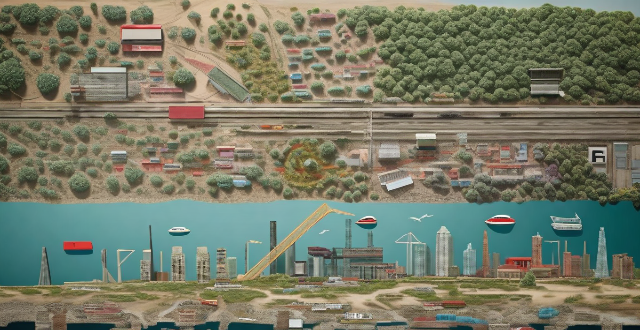Public transportation systems in rural areas face unique challenges compared to those in urban areas, including limited accessibility, high costs, limited service options, and a lack of awareness and education. These challenges can make it difficult for public transportation providers to justify providing services to rural areas, resulting in limited access to these important modes of transportation for many people living in rural communities.

Challenges Faced by Public Transportation Systems in Rural Areas Compared to Urban Areas
Public transportation systems play a crucial role in connecting people to their destinations, facilitating economic growth, and reducing environmental impact. However, the challenges faced by public transportation systems in rural areas are significantly different from those in urban areas. In this article, we will explore the challenges faced by public transportation systems in rural areas compared to urban areas.
Limited Accessibility
One of the biggest challenges faced by public transportation systems in rural areas is limited accessibility. Unlike urban areas, where public transportation is readily available and accessible, rural areas often have limited or no access to public transportation. This can be due to a variety of factors, including:
- Sparse Population Density: Rural areas tend to have lower population densities than urban areas, making it difficult for public transportation providers to justify the cost of providing services to these areas.
- Long Distances Between Stops: The distance between stops in rural areas can be much greater than in urban areas, making it more difficult for people to access public transportation.
- Limited Infrastructure: Many rural areas lack the necessary infrastructure, such as roads and bridges, to support public transportation systems.
High Costs
Another challenge faced by public transportation systems in rural areas is high costs. Providing public transportation services to rural areas can be significantly more expensive than providing services to urban areas due to several factors, including:
- Higher Maintenance Costs: Rural roads and bridges may require more frequent maintenance than urban roads and bridges, increasing the overall cost of providing public transportation services.
- Lower Ridership: Lower population densities in rural areas mean that there are fewer potential passengers, resulting in lower ridership and higher per-passenger costs.
- Longer Routes: Longer routes between stops in rural areas can increase fuel costs and driver salaries, further increasing the overall cost of providing public transportation services.
Limited Service Options
Public transportation systems in rural areas often have limited service options compared to urban areas. This can be due to a variety of factors, including:
- Fewer Buses or Trains: Due to the high costs associated with providing public transportation services in rural areas, there may be fewer buses or trains available for passengers.
- Infrequent Service: Public transportation services in rural areas may operate on less frequent schedules than in urban areas, making it more difficult for passengers to rely on these services for their daily commutes.
- Limited Connectivity: Rural public transportation systems may not connect passengers to major cities or other important destinations, limiting their usefulness for many passengers.
Lack of Awareness and Education
Finally, another challenge faced by public transportation systems in rural areas is a lack of awareness and education about these services. Many people living in rural areas may not be aware that public transportation services are available or how to access them. This can be due to several factors, including:
- Lack of Marketing Efforts: Public transportation providers may not allocate sufficient resources towards marketing efforts in rural areas, resulting in low awareness levels among potential passengers.
- Cultural Differences: Cultural differences between urban and rural populations may influence attitudes towards public transportation, making it more difficult for providers to promote these services effectively.
- Lack of Educational Programs: There may be a lack of educational programs designed to teach people how to use public transportation systems effectively, further limiting their adoption among rural populations.